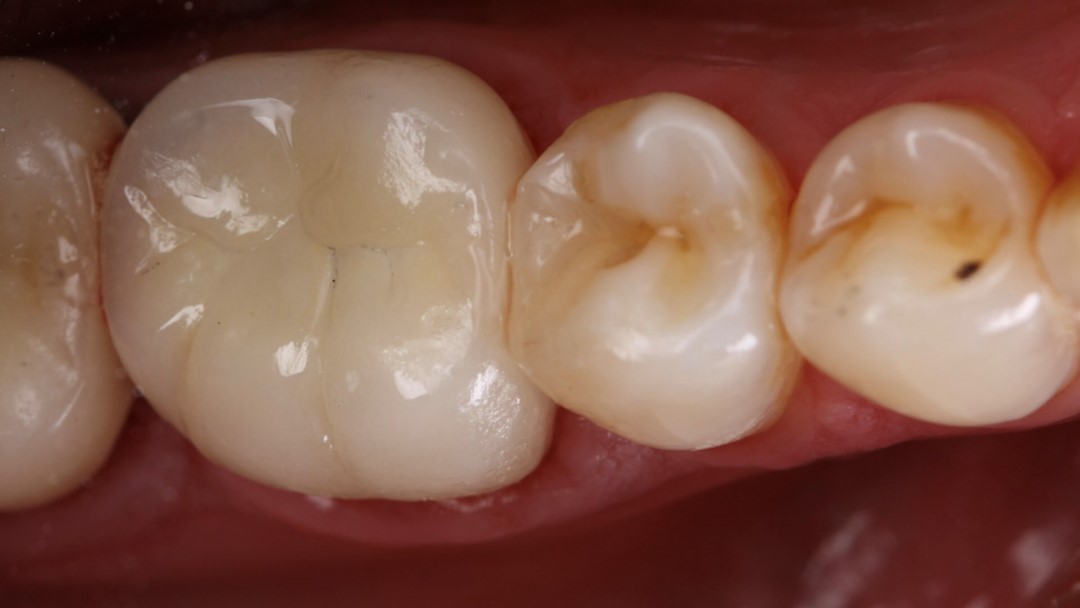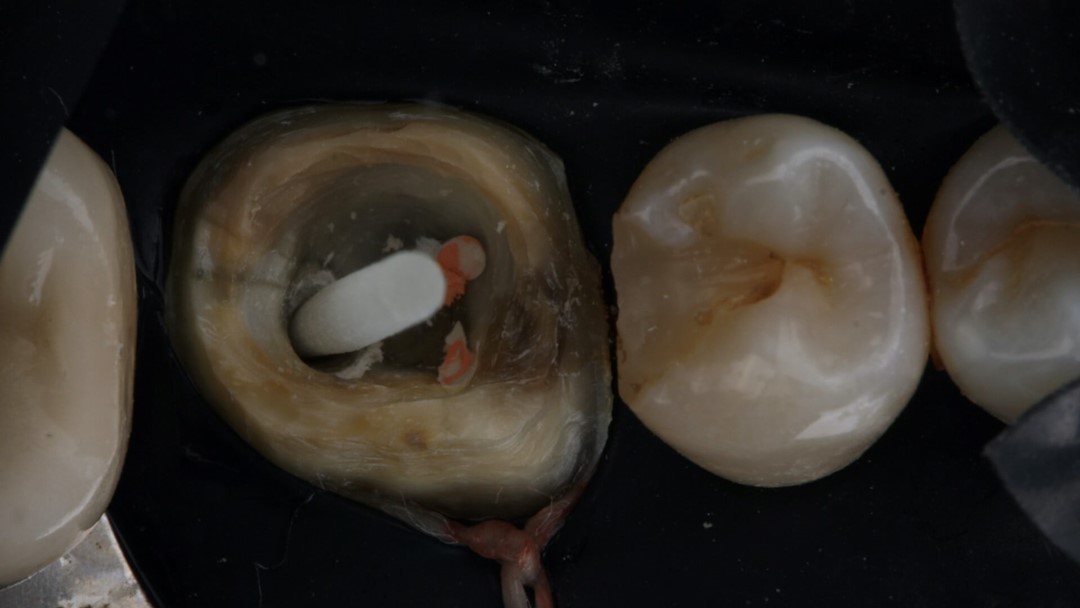Author: Dr. Frederico Vasconcellos.
Patient: male, 60 years old.
MAIN COMPLAINT
Patient would like to finalize the restorative treatment after undergoing endodontic treatment on tooth 46.
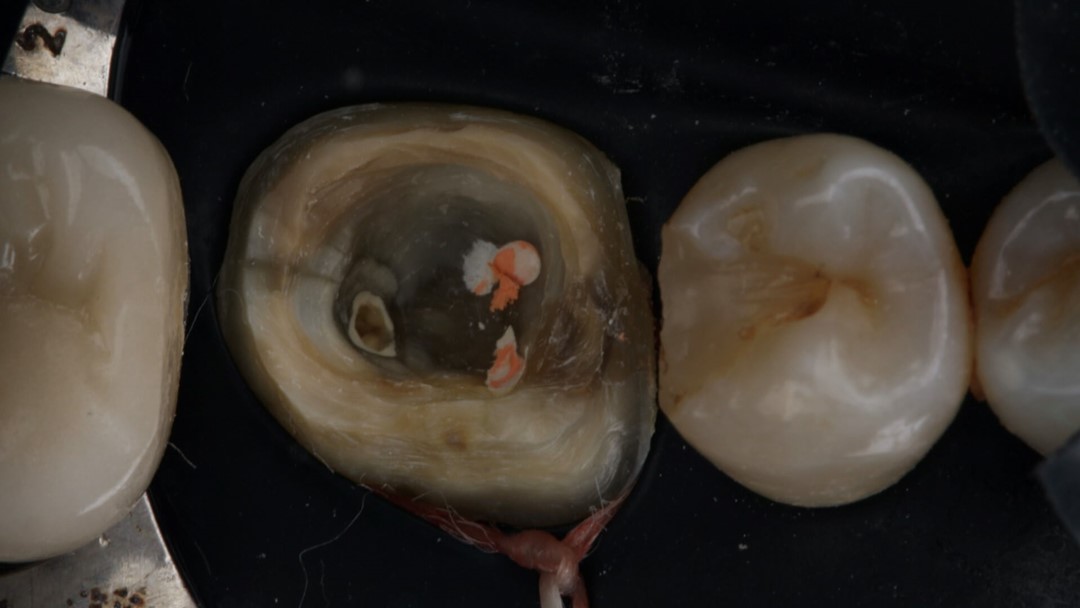
INITIAL ASSESSMENT
After the anamnesis and radiographic evaluation of the endodontic treatment of tooth 46, it was found to be satisfactory for the restorative treatment.

TREATMENT PERFORMED
After achieving absolute isolation and removal of the temporary restoration, the obturated canals were evaluated. The distal canal was cleared using size 2 Gates-Glidden burs, followed by the use of a Whitepost kit size 1 bur. The next step involved a trial fit of the Whitepost DC size 1 post to assess its adaptation within the root canal. Subsequently, an adhesive system (Ambar Universal APS – FGM) was applied, and after polymerization of the adhesive, the Whitepost size 1 post was cemented using the resin cement Allcem Core, while simultaneously filling the pulp chamber with the same material. The cement was light-cured for the duration recommended by the manufacturer.
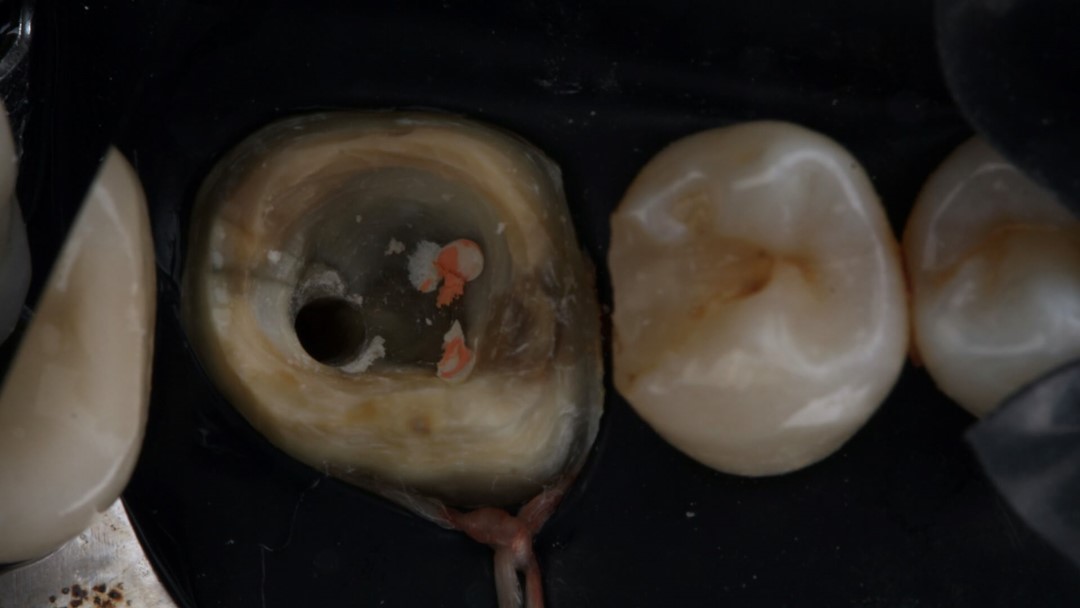

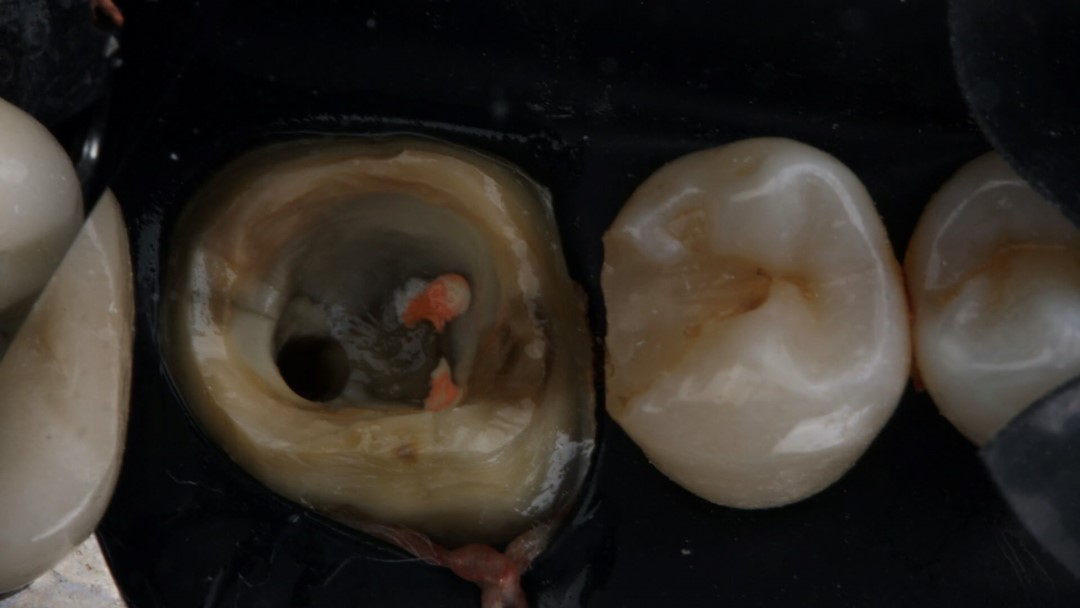
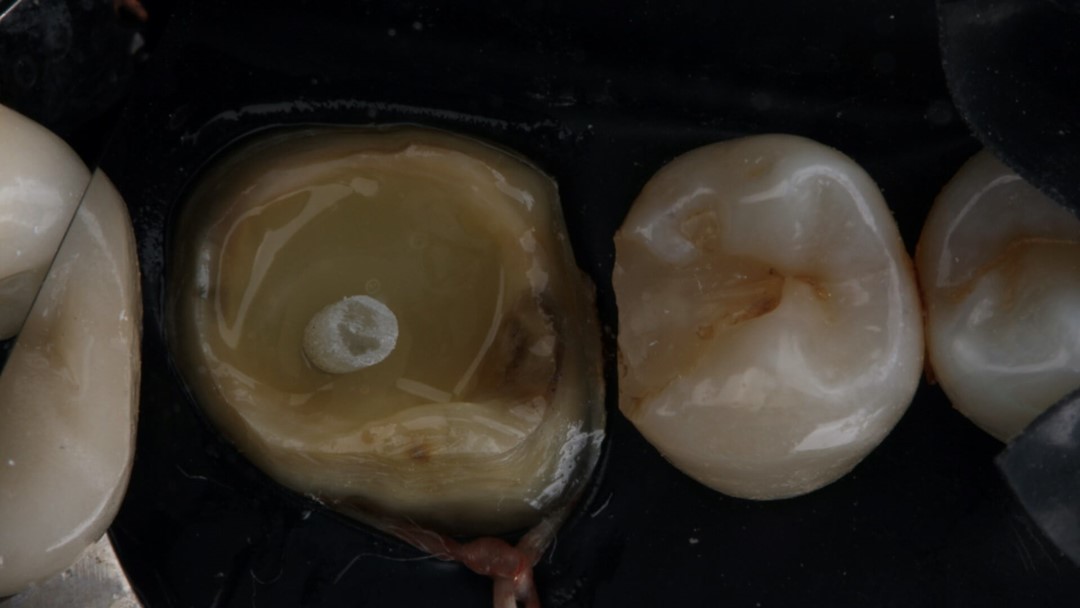
Next, a new increment with the same Allcem Core resin cement was applied, followed by photoactivation for the recommended time by the manufacturer. After 10 minutes, preparation for a full crown was performed and absolute isolation was removed. Subsequently, final impression was taken using the double-cord retraction technique, and the impression was sent to the laboratory for the fabrication of a monolithic lithium disilicate full crown. After receiving the laboratory work and making all necessary adjustments, a new absolute isolation was applied for the final cementation of the full crown. An adhesive system (Ambar Universal APS – FGM) was applied to the remaining tooth structure.
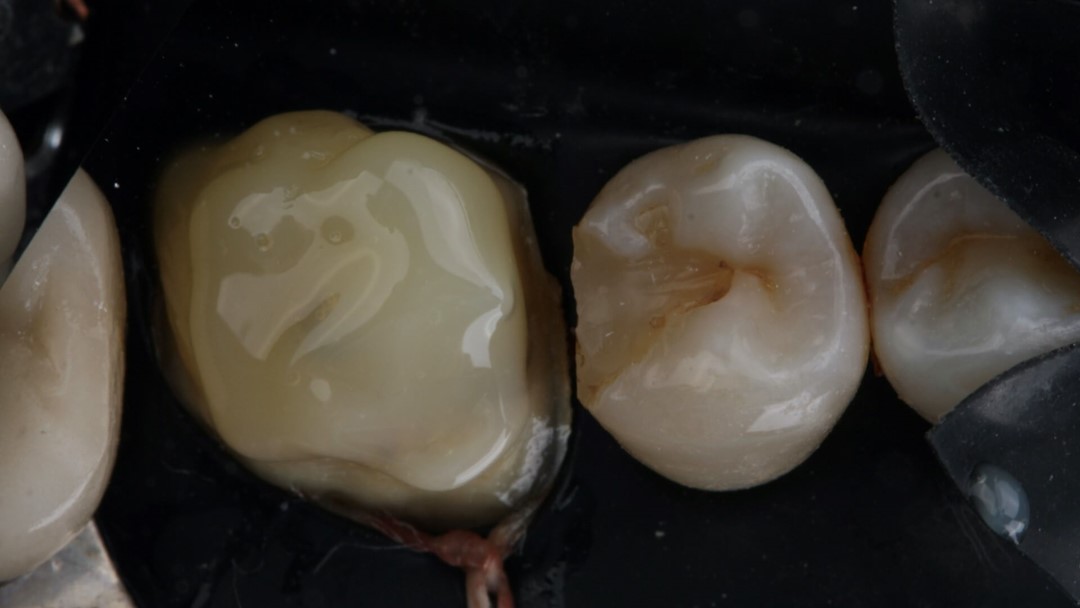
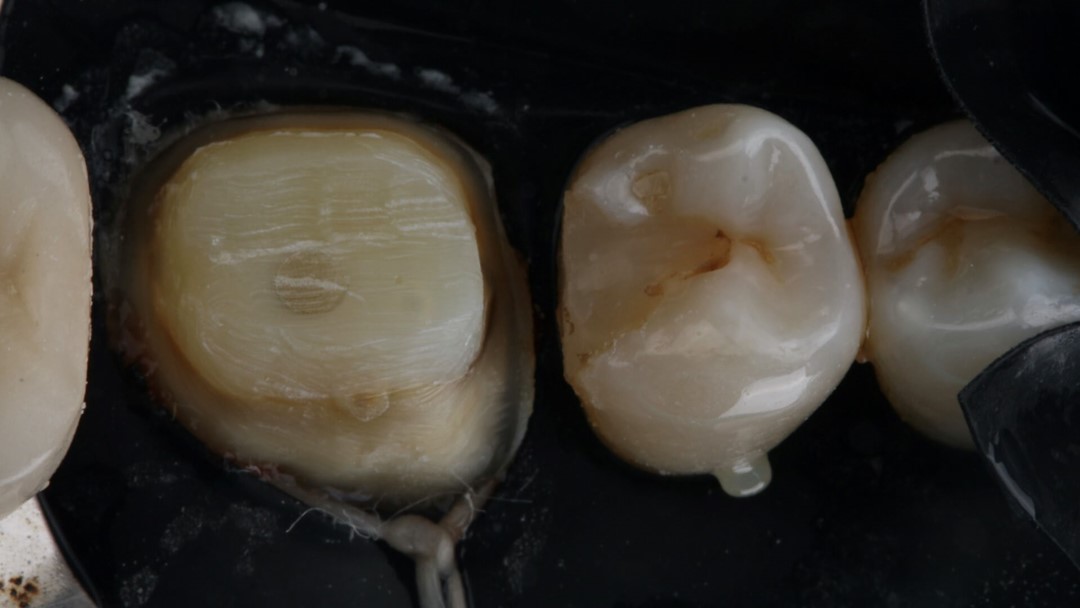


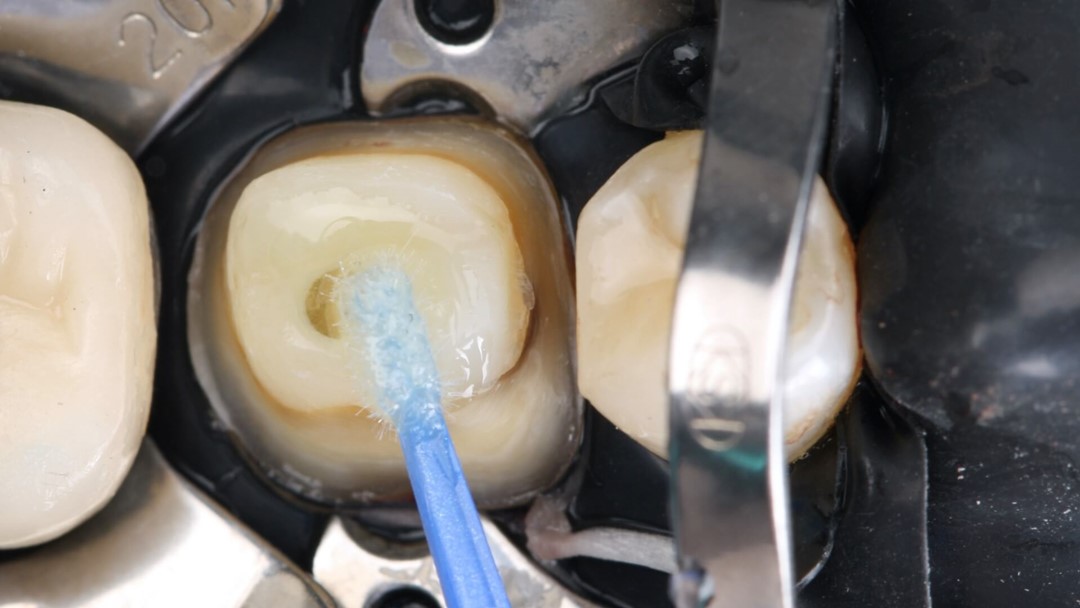
For the crown, 10% hydrofluoric acid (Condac Porcelana – FGM) was applied for 20 seconds, followed by rinsing with air and water for 60 seconds, and then silane application (Prosil – FGM) for 60 seconds. The same resin cement used for the Whitepost pin cementation, Allcem Core, was used for crown cementation.

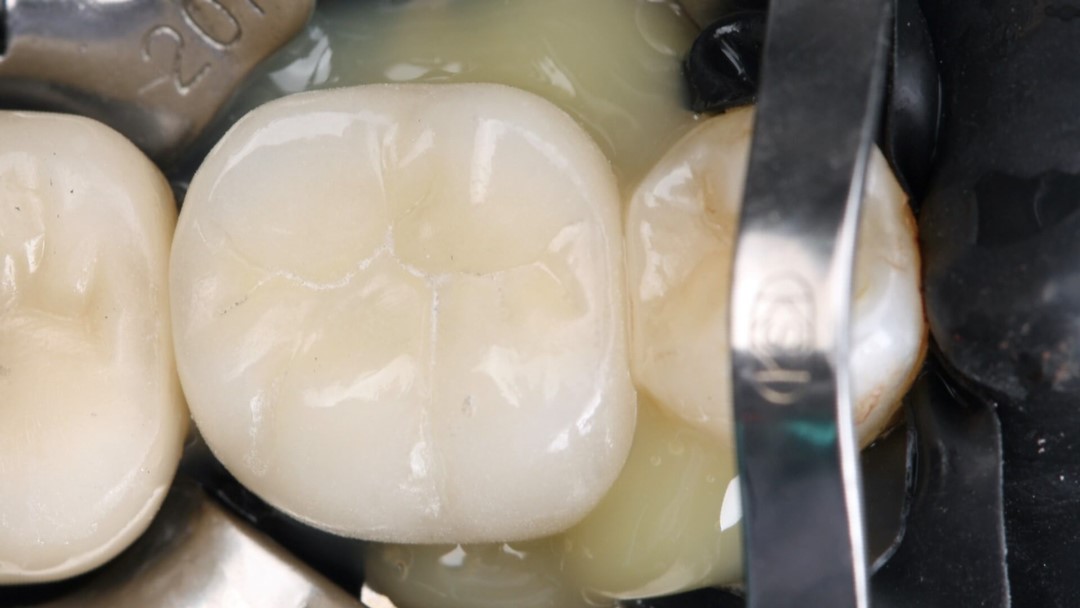
After cleaning the excess cement, photoactivation was performed for the recommended time by the manufacturer. Subsequently, the rubber dam was removed, and the treatment was completed.
